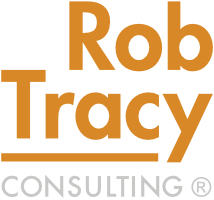A few months ago, I wrote an article for this column titled “How (and When) Manufacturers Can Measure Marketing ROI”.
This one is its much less beloved (but equally important) counterpart.
First, a little context…
The insanely fast acceleration of information technology over the past two decades has driven us to a place where we, unfortunately, feel inclined to measure absolutely everything. And that includes marketing analytics.
We live in a world of instant gratification. If we spend $X, we want to know it’s returning $Y. And we want $Y now. Or at least by next week, right?
What I’ve observed as a Marketing Consultant serving midsized manufacturers for over 10 years is that this thirst for immediate ROI is creating three issues:
- We’re avoiding initiatives that take months to bear fruit
- We’re focusing too heavily on quick wins with the wrong types of customers
- We’re unwilling to run experiments because they could fail
Let’s break down these three issues:
1) We’re avoiding initiatives that take months to bear fruit
Some of the marketing decisions we make simply won’t produce results we can hold in our hands after three or six months.
That may be tough to stomach, but think about the brand power of household names like Rockwell Automation, FANUC, Grainger or Siemens.
It’s hard to imagine building a powerful trademark like these on the back of a pay-per-click campaign.
And frankly, the same applies to a midsized B2B manufacturer as well.
The reality is that things like creating and publishing thought leadership content, producing an educational webinar series or launching a podcast all take time to produce results. But along the way, you’re building an audience while showcasing your expertise.
Do you really want to trade in that value just to hit this month’s sales target?
2) We’re focusing too heavily on quick wins with the wrong types of customers
Just about every manufacturing organization I talk to has a wide variety of customer types and product lines. For big-ticket CapEx equipment manufacturers, it’s often the twelve-month sales cycle, complex, custom solution with a $500K+ price tag that moves the needle.
But twelve-month sales cycles take, well twelve months. So that means literally everything you do on the marketing front to build awareness, establish trust and open up sales conversations with those buyers in 2020 will return 0% ROI by December.
So does that mean we should just revert to focusing marketing efforts on low-margin products for often wrong-fit customers simply because they’ll close more quickly?
3) We’re unwilling to run experiments because they could fail
OK, so that trade show you go to every year produces 10 or 20 sales qualified leads. Better keep doing it, right? This year’s virtual show promises to be exhilarating!
There’s an opportunity cost at play here.
I can almost promise you that reinvesting that spend into a digital strategy targeting specific buying process influencers from a defined industry vertical will produce a far greater return.
But if you’re stuck on maintaining the more certain status quo, you’ll never run the experiments that are likely to outperform the old school playbook exponentially.
In conclusion, I’m not advocating for throwing out the marketing scorecard. No way. But I am advocating for balance – some level of short-term sacrifice in favor of the playing the long game.
Joe Sullivan is a Cofounder of the industrial marketing agency Gorilla 76 and host of The Manufacturing Executive podcast. Visit gorilla76.com/learn for an ever-expanding collection of articles, videos, guides and tools to help midsized manufacturers identify, attract, engage and drive sales with ideal-fit customers. Joe is a frequent contributor on LinkedIn, and don’t forget to listen to his show at themanufacturingexecutive.com.
